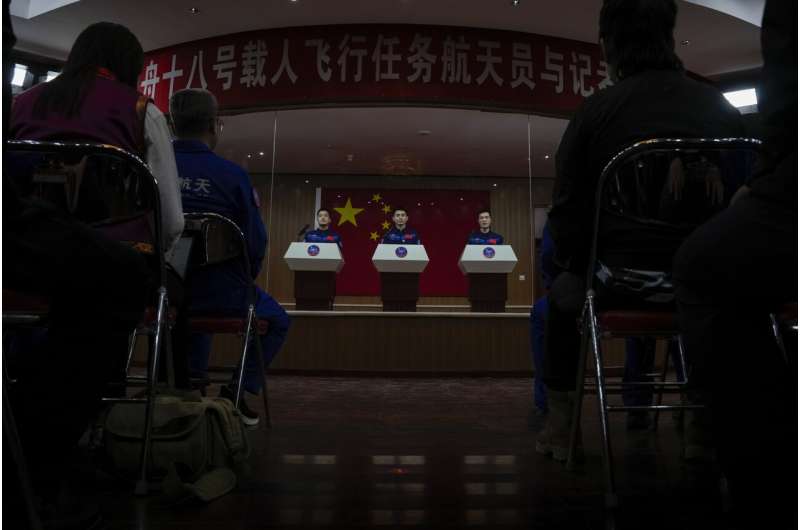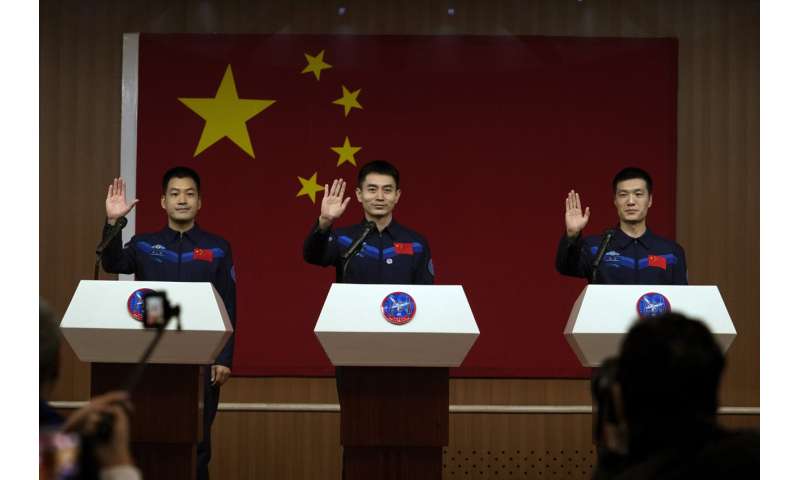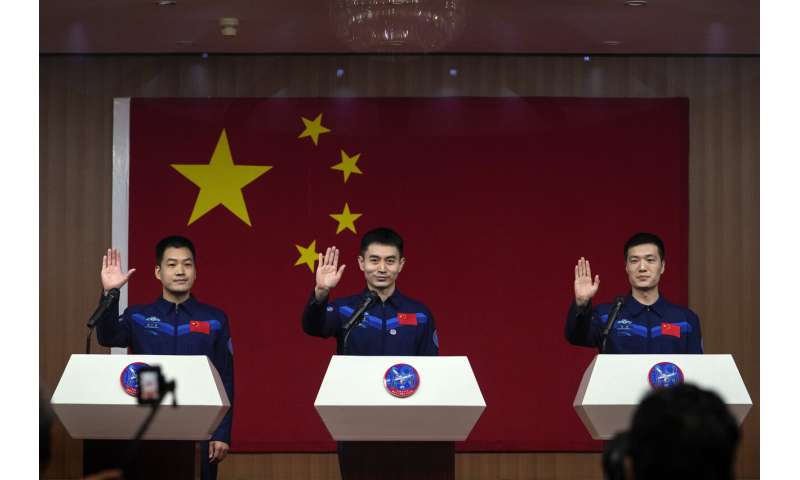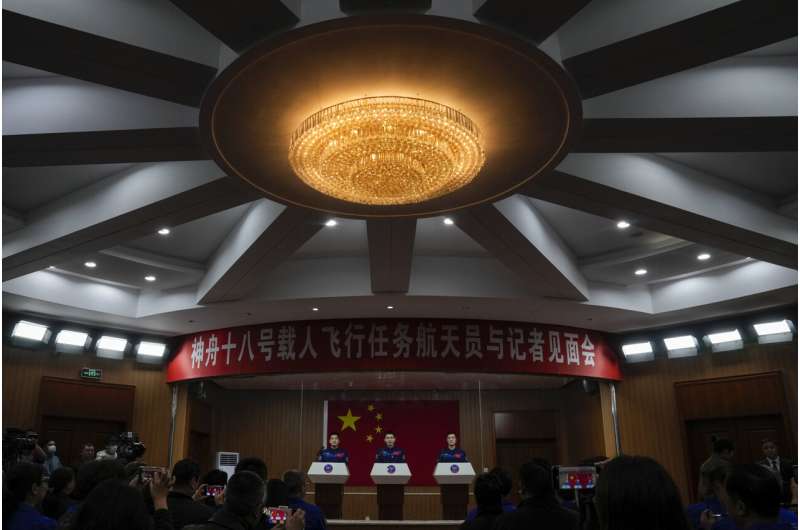This year, the station is slated for two cargo spacecraft missions and two manned spaceflight missions.
In a press conference on Wednesday, the China Manned Space Agency (CMSA) introduced the three astronauts: Commander Ye Guangfu, 43, a veteran astronaut who was part of the Shenzhou-13 mission in 2021; and astronauts Li Cong, 34, and Li Guangsu, 36, who will go to space for the first time.
The Shenzhou-18 crew will spend about six months on the space station. They will conduct scientific tests, install space debris protection equipment on the space station, carry out payload experiments, and popularize science education, among other things, according to Lin Xiqiang, deputy director of the CMSA.

Lin also said China was working toward eventually offering access to its space station to foreign astronauts and space tourists.
"We will accelerate the research and promotion of the participation of foreign astronauts and space tourists in flights with China's space station," he said. "We definitely expect to see astronauts of different identities on China's space station."
The crew is set for lift-off at 1259 GMT from the Jiuquan Satellite Launch Center on the edge of the Gobi Desert in the country's northwest.
China conducted its first manned space mission in 2003, becoming the third country after the former Soviet Union and the U.S. to put a person into space using its own resources.
The U.S. space program is believed to still hold a significant edge over China's due to its spending, supply chains and capabilities. However, China has broken out in some areas, bringing samples back from the lunar surface for the first time in decades and landing a rover on the less explored far side of the moon.

Chinese astronauts for the upcoming Shenzhou-18 mission, from left, Li Guangsu, Ye Guangfu and Li Cong wave as they arrive for a meeting with the press at the Jiuquan Satellite Launch Center in northwest China, Wednesday, April 24, 2024. Credit: AP Photo/Andy Wong 
Chinese astronauts for the upcoming Shenzhou-18 mission, from left, Li Guangsu, Ye Guangfu and Li Cong wave as they arrive for a meeting with the press at the Jiuquan Satellite Launch Center in northwest China, Wednesday, April 24, 2024. Credit: AP Photo/Andy Wong
The U.S.—the only country to have previously put astronauts on the moon—aims to put a crew back on the lunar surface by the end of 2025 as part of a renewed commitment to crewed missions, aided by private sector players such as SpaceX and Blue Origin.
Only four countries, the U.S., Russia, China and India, have landed spacecraft on the moon.
© 2024 The Associated Press. All rights reserved. This material may not be published, broadcast, rewritten or redistributed without permission.



